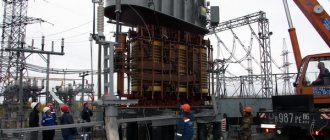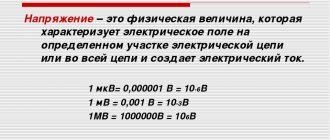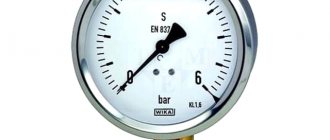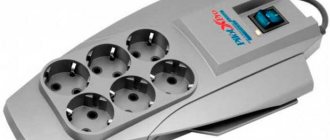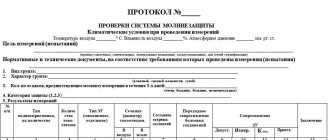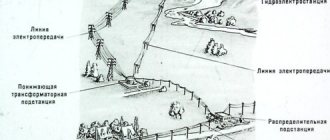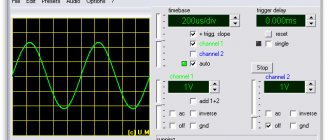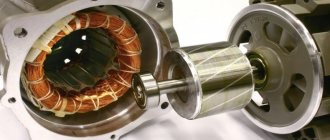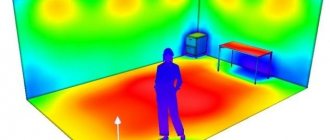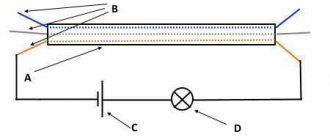General information
A measuring device is a device that allows you to obtain the value of a certain physical quantity in a given range. The latter is set using an instrument scale. Technical devices also make it possible to convert values into a more understandable form that is accessible to a specific operator.
Currently, the list of measuring instruments is quite wide, but most of them are intended for monitoring the technological process . This could be a temperature or cooling sensor in air conditioners, heating furnaces and other devices with a complex design.
Among the names of measuring instruments there are both simple and complex, including in design. Moreover, the scope of their application can be both highly specialized and widespread.
To find out more information about a specific instrument, it is necessary to consider a certain classification of control and measuring devices and instruments.
Mechanics
- Measuring instruments for measuring length Length is the basic physical quantity used to determine the distance between two points in space, the movement must occur in a straight line. Length is designated as L, the unit of measurement is meter. To measure length using the following measuring instruments:
- Global Positioning System (GPS);
Laser rangefinder;
- Meter (instrument);
- Micrometer;
- A gauge block used for precise measurement and control of measuring instruments.
- Odometer for measuring distance on roads and terrain.
- Radar.
- Ruler.
- Volume measuring instruments
- Measuring cup for measuring the volume of liquid;
Pipette or droppers for measuring the volume of liquid;
- Pycnometer for measured relative density;
- Gas volume flow measurement;
- Water meter for measuring the flow of liquids.
- Speed measuring instruments
- An anemometer is used to measure wind speed;
Speedometer for motor vehicles;
- Aircraft speedometer;
- Doppler radar, which uses the Doppler effect;
- Tachometer measure speed;
- Electronic total station;
- Variometer.
- Pressure measuring instruments
- Barometer for measuring atmospheric pressure;
A pressure gauge is a measurement instrument that shows the difference in pressure between a medium (gas or liquid) and a reference pressure (usually atmospheric).
- Pitot tube
- Torque Measuring Instruments
- A dynamometer is a measuring instrument for measuring force or torque. It is based on the change in the length of an elastic spring under the influence of force.
The engine brake is used to check engine power and is used in scientific research institutes, factories and repair shops.
Finished works on a similar topic
Course work Measuring instruments 470 ₽ Abstract Measuring instruments 220 ₽ Test work Measuring instruments 220 ₽
Receive completed work or specialist advice on your educational project Find out the cost
Types of measuring instruments
Depending on what kind of measuring instruments there are, their names may differ in different classifications.
Typically, devices can be of the following type:
- Analog measuring instruments and devices in which the output signal is some function of the quantity being measured.
- Digital devices where the output signal is presented in the appropriate form.
- Instruments that directly record the results of measurements taken.
- Summing and integrating. The former provide readings as the sum of several quantities, while the latter allow you to integrate the value of the measured quantity using another parameter.
The instruments described above are the most common and are used to measure a number of physical quantities. The complexity of the physical processes occurring requires the use of several instruments classified into different classes.
Technical breakthrough
The first industrial revolution occurred in the 18th century and brought machines, devices, mechanisms, the development of which we see today. The invention of the steam engine made it possible to put mass production on stream and led to the decline of the artisanal manufacturing method, significantly changing the social structure of society. Created in the 19th century, the internal combustion engine led to the creation and constant improvement of all types of transport. A huge number of self-propelled mechanisms have appeared, exploring space.
New machines were created that significantly simplified road construction, construction and mining work, and so on. The appearance and use of electricity gave impetus to new types of technical devices - this is not only lighting, but also radio engineering, radio electronics, the dream of space exploration has ceased to be unrealistic. The beginning of the 20th century was marked by the introduction of automation of production processes, the first computer technology appeared, and the first artificial satellite was launched into space.
According to experts, the next round of development of technical devices is associated with nanotechnology and biotechnology; promising research and the first achievements in these areas were identified at the end of the 20th century.
Device classification
Different fields have their own classification of devices designed to measure physical quantities.
Devices can be divided according to the following criteria:
- Transformation method: direct action, comparison, mixed transformation.
- According to the method of issuing information, they are divided into showing and recording.
- The type of output information can be represented by either an analog or digital signal.
Recording devices are divided into recording and printing types. The most progressive option is recorders, since they have higher accuracy in providing information and greater opportunities for measuring previously specified parameters.
Documentation
A technical device is a set of qualities that allow it to be used in any field. Production and operation are determined by the rules and technological requirements described in the documentation supplied with each device.
Basic documents included in the package:
- Passport products. It indicates the technical characteristics of the device, expressed in calculated units of performance, energy consumption, etc. The passport is often supplemented with information about the condition of the equipment, repairs performed, warranty period of service, etc.
- Manual. The document describes the principle of operation, scope of application, storage and operation rules, methods of disposal and transportation.
- Instructions for installation, start-up, regulation, running-in. The document is compiled for industrial devices with special operating conditions.
- Label. Placed directly on the product if the necessary data for operation and startup contains no more than five points and there is no point in creating a passport.
Any technical device is a unit of production manufactured industrially. The documentation for it must comply with the standards prescribed in the ESKD, ESPD or ESTD.
Analog and digital
Digital inspection instruments can be either digital or analog. The former are considered more convenient. In them, indicators of force, voltage or current are converted into numbers and then displayed on the screen.
But at the same time, inside each such device there is an analog converter. It is often a sensor that takes and sends readings to convert them into a digital code.
Although analog instruments are less accurate, they are simpler and have better reliability. There are also varieties of analog instruments and devices that include amplifiers and value converters. For a number of reasons, they are preferable to mechanical devices.
Repair, maintenance and prevention
After setting up and starting up the equipment, the time for operation comes; during this period, gradual wear of components, mechanisms, etc. occurs. After the period of use specified in the passport, the technical device requires preventive maintenance. Maintenance and repair are the responsibility of the service department of the enterprise where the equipment operates, or at special points in the case of household appliances. Everyone is accustomed to the fact that a car needs periodic maintenance; the same practice exists for any mechanism.
Preventative measures help prolong the life of devices and their efficient operation. The main equipment maintenance actions have a general algorithm:
- Checking the general condition of components, devices, and the functional state of the device visually and using technical measuring instruments.
- Checking the extent of damage and wear of equipment parts and replacing them with new ones if necessary.
- Testing and adjusting the operation of the device after repair and maintenance, starting work.
- If a device is morally or technically outdated, it is replaced with a device with advanced capabilities.
- At the end of its service life, the technical device must be dismantled and disposed of in accordance with approved standards.
For pressure and current
Everyone from school or university is familiar with the names of measuring instruments such as barometers and ammeters. The first ones are designed to measure atmospheric pressure. There are liquid and mechanical barometers.
Liquid varieties are considered professional due to the complexity of the design and the features of working with them. Weather stations use barometers filled with mercury inside. They are the most accurate and reliable, allowing you to work under temperature changes and other circumstances. Mechanical designs are simpler, but they are gradually being replaced by digital analogues.
Ammeters are used to measure electrical current in amperes. The ammeter scale can be graduated in standard amperes, as well as micro-, milli- and kiloamperes. It is best to connect such devices in series. In this case, the resistance decreases, and the accuracy of the readings increases.
Voltage measurement
Magnetoelectric ammeter.
Voltage exists between two points; it does not flow through a circuit like current. Hence, the voltmeter used to measure the voltage is connected in parallel with the circuit.
Caution: If a voltmeter is connected in series, a large current may flow through it and damage it.
Polarity is also important here. The negative terminal of the voltmeter should be connected to the more negative point of the circuit (lower potential), and the positive terminal to the more positive point of the circuit (higher potential). If the connection points are swapped, the meter's needle will deviate to the left and the measurement cannot be taken. If this happens, swap the pins.
To take measurements, you must first turn off the power to the circuit, connect the voltmeter, and then turn the power back on. First set the voltmeter to its highest range. After voltage is applied to the circuit, set the most appropriate measuring scale of the device.
The internal resistance of the voltmeter is connected in parallel to the circuit element being measured. The total resistance of resistors connected in parallel is always less than the resistance of the smallest resistor. As a result, the voltage that the voltmeter shows is less than the actual voltage without the voltmeter.
In most cases, the internal resistance of the voltmeter is high enough and the error is so small that it can be ignored. However, if the voltage is measured in a high resistance circuit, the resistance of the meter may have a noticeable effect. Some voltmeters designed for such purposes have extremely high internal resistance.
Locksmith tools
Quite often you can find measuring plumbing tools. The most important characteristic is measurement accuracy. Due to the fact that locksmith tools are mechanical, it is possible to achieve accuracy of up to 0.005 or 0.1 mm.
If the measurement error exceeds the permissible threshold, a violation of the instrument’s operating technology will occur. Then you will need to resharpen the low-quality part or replace the entire unit in the device. Therefore, it is important for a mechanic when adjusting the shaft to the bushing to use tools with greater measurement accuracy rather than a ruler.
The most popular tool with high measurement accuracy is a caliper . But he will not be able to guarantee an accurate result from the first measurement. Experienced workers take several measurements, which are then converted into an average value.
There are operations that require maximum precision. There are many of these in micromachines and individual parts of large-sized devices. Then you should use a micrometer. With it you can measure with an accuracy of hundredths of millimeters. The common misconception that it allows you to measure microns is not entirely true. And when carrying out standard household work, such accuracy may not be useful, since the current values of accuracy and error are sufficient.
Story
Following Darwin's theory, an abstract monkey, picking up a stick, evolved into a human being. Today this theory, although classical, is controversial. What is interesting about this story is that the stick was the first technical device with which goals were achieved. The emerging primitive man used invented means for effective hunting and defense - boomerangs, spears, stone axes, awls, etc.
The simplest devices made of stone and wood were replaced by bronze and iron products. Evolution complicated the human intellect, and the first means of transportation, agricultural technology, hydraulic structures and the simplest mechanisms began to appear - a wheel, a block, a lever, etc.
